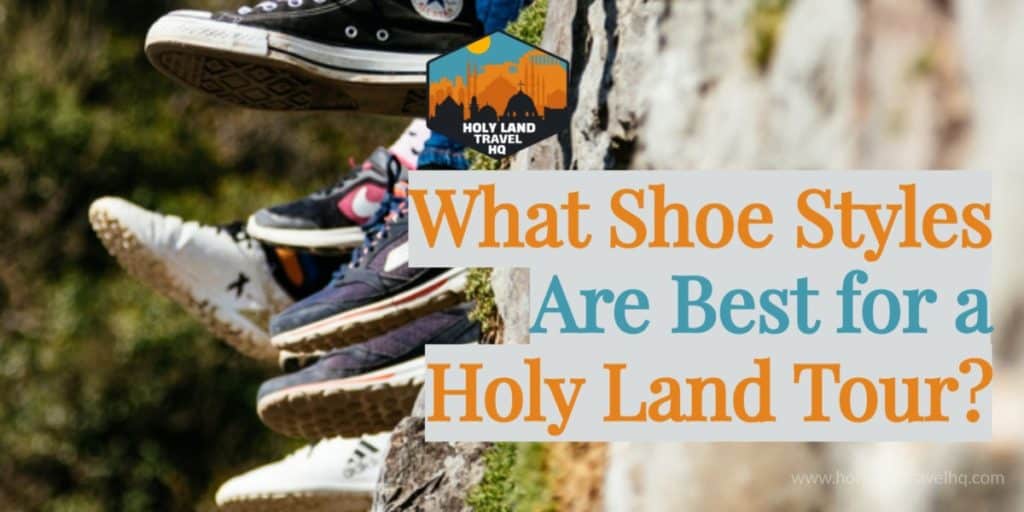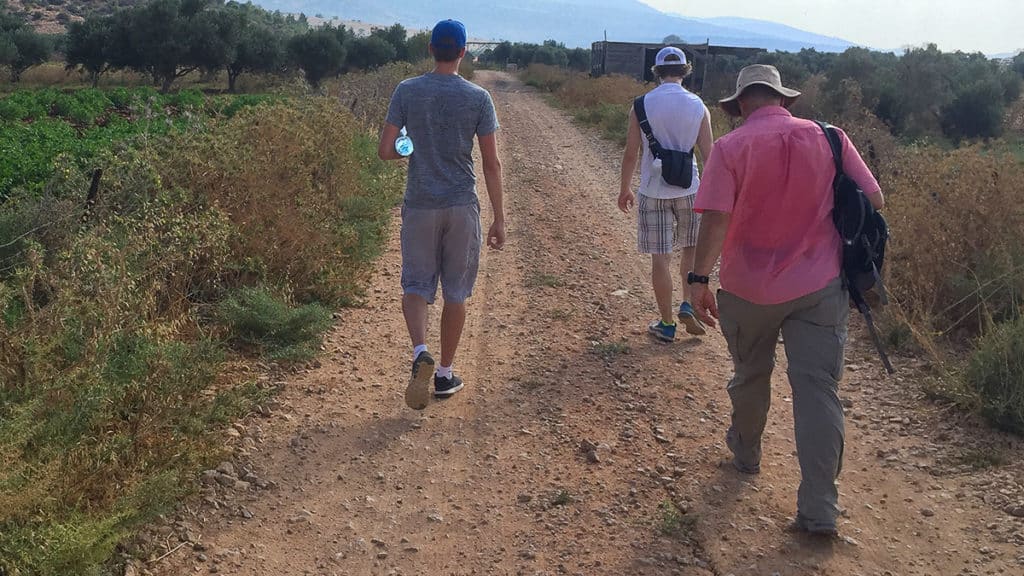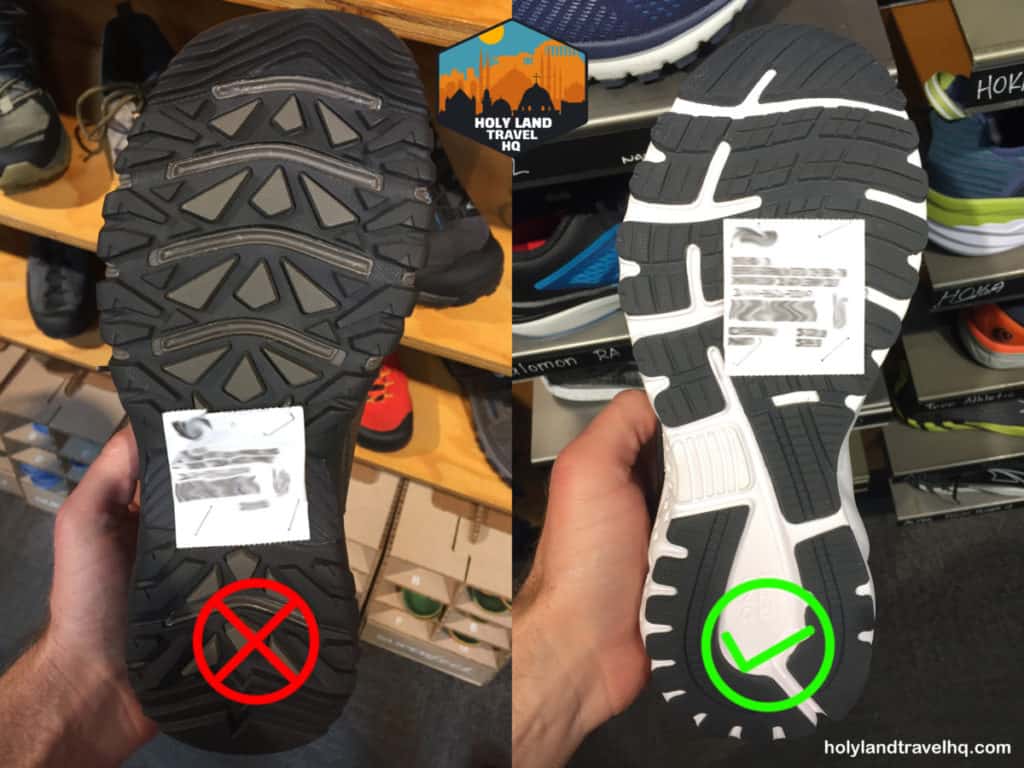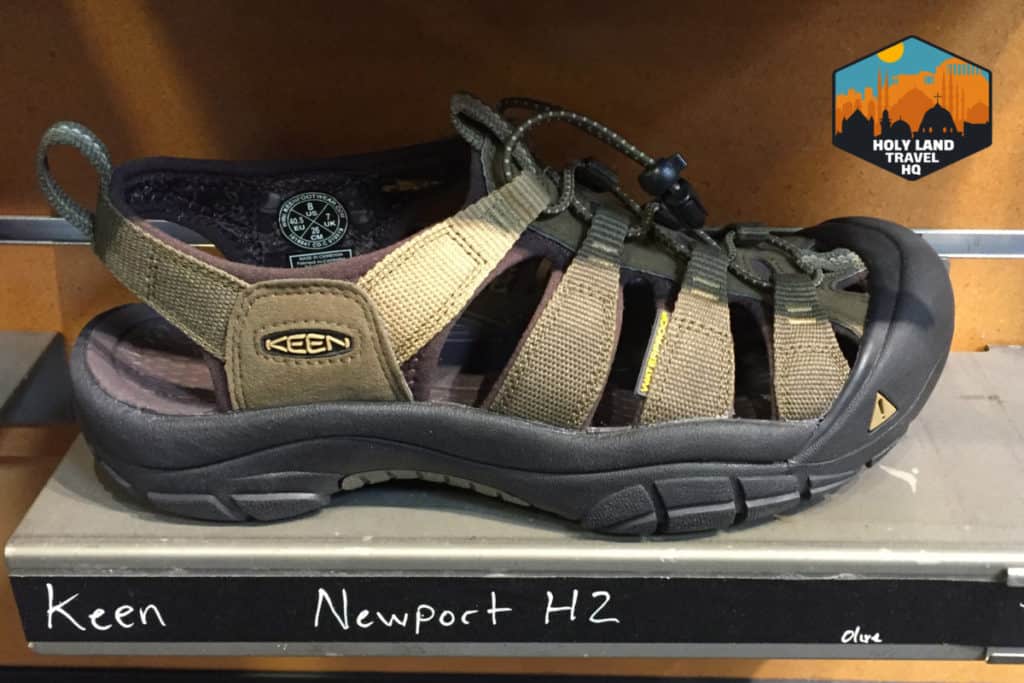
You’ve signed up for your trip. Great! Now you’re looking for a few wardrobe items that will contribute to your comfort while traveling. One of the items on your list is footwear. You wear your flip flops at home all the time, and you never have any problems. But you aren’t home. You’re in a foreign country.
So, what shoe styles are the best for a Holy Land Tour? You want to look for snug footwear with flexible rubber soles that allow you to react. You’re treading on unfamiliar territory. You need to think about comfort and safety.
In a previous post, I discussed comfort (link to post), which is going to contribute to safety. But here I want to talk specifically about safety, both from the physical environment and from crime. This discussion is mainly geared for older travelers. But I encourage everyone to read for awareness on the terrain.
The situation.
You know where all the steps in and around your house are. But you don’t know about that bulging stone in the Old City Jerusalem sidewalk that has a habit of breaking toes. Or the smooth marble step that’s been given the name Slippery Sam.
Whether you are going to Israel, Turkey, Greece, Jordan, Egypt or Italy; the environment is all dynamic. You’ll encounter everything from uneven city sidewalks, to stone pathways, to steep paved roads, to dirt hiking trails.
Depending on the nature of your tour you could find yourself traversing all, or a mix of these terrain features. Generally, the study tours will include the hikes. But even if your tour does a hike, there will always be an option to skip it.
Whenever you travel to a location you’ve never been to before, everything you encounter requires you to react. Yes, something bad can happen, and you might need to run. But the most likely situation is that the unfamiliar terrain will throw you off.
Common walkway problems are trip and slip hazards.
In the Old City of Jerusalem walkways are all stone pavers. Some were installed in the last few decades, while others have been there for centuries. Generally, the stones have become smooth because of decades or centuries of foot traffic.
Moisture or dry dust don’t mix well with smooth stone. I’ve lost traction before with my shoes. So, if you are an older traveler, you’ll want to be prepared.
Pavement is pretty safe because water tends to work itself into the crevasses and cracks. However, on steep hillsides, such as the pathway up the Mount of Olives, it can get dicey for older travelers.
When you visit ancient ruins, dirt and gravel pathways are the norm. They are safe, but trip and slip hazards can occasionally appear. Roots can pop up, and loose rocks on top of hard packed dirt can cause sliding.

Hiking trails and off-the-beaten-path excursions, like finding Tel Cana, can be easy for outdoor travelers, as well as young travelers. If you are an avid hiker or even someone who goes occasionally, there is nothing new. However, some of you aren’t into the outdoors. I get it. But you want to experience what Abraham and David experienced.
At Ein Gedi for example, the trail is not difficult. However, if you’re older or not athletically inclined, you’ll want to make sure you are prepared with good shoes.
Like I said in my previous post on what to wear, comfort is your number one priority with your shoes. Second is choosing a pair that keeps you safe from injury. Let’s talk treads.
Some treads are better suited for your tour then others.
The type of tread you want to look for is commonly found on running and walking shoes as well as outdoor sandals and a few trail shoes. The rubber on the sole is flexible and you can easily move the nubs with your fingers. Nub size can vary from numerous and small ones to large ones. Either way they will be flexible.
Running and walking shoes are made for use on hard surfaces such as pavement and stone pavers.
When you step on a hard surface the rubber on the sole flexes between the hard surface and your foot. This flexing spreads the rubber across the surface to grip it. When stepping on wet surfaces, the flexing rubber pushes moisture and finds a contact surface to grip.
There is always a possibility of slipping, but these types of soles reduce that chance. There are a few styles of hiking shoes that crossover with running and walking shoes. These shoes are OK.
Hard soles, such as those found on hiking boots and shoes, are good for dirt trails, but not pavement. This type of rubber is not easy to move with your fingers. Nubs tend to be stiff and large, sometimes as big as the upper half of your thumb.
These hard soles are made for loose soil. The hard nubs grind through loose dirt to find something to grip. Because most of your walking will be on hard surfaces or impacted dirt pathways these types of shoes are not appropriate.

Flip Flops, or sandals as some people call them, are a mixed bag. The types of soles vary widely. So, I have no advice here. If you are a flip flop person and are comfortable with wearing them, that’s fine.
The problem with flip flops is that they are not snug and they aren’t made for long walks.
Your Footwear should be snug to your foot.
When you’re traveling in unfamiliar places you want to be able to react effectively. This means wearing footwear that is snug to your feet. You might need to react fast to a threat, or the terrain has caught you off guard and now you’re trying to maintain balance.
If you bought running or walking shoes, this discussion does not apply. But if you want to bring your flip flops or sandals, think about getting a pair of outdoor sandals. Almost all of the major outdoor companies sell sandals with straps that wrap over the foot and around the heel.

Adjustable straps will keep your footwear attached to your feet and allow you to maneuver when something surprises you.
Outdoor sandals also have stronger strap connections for ruggedness. You will do a lot of walking and normal flip flops and sandals aren’t made for that kind of use. For example, on one of my tours, someone had a flip flop come untethered while walking. Luckily, they had walking shoes back in their room. But they had to walk back with one bare foot.

The Dead Sea.
One small note here. When you go to the Dead Sea, you will want a pair of flip flops, shower shoes or beach shoes.
You can walk barefoot once you get to the beach, but if you go in the shower room, you’ll want something on your feet.
Final Thoughts.
What you choose to put on your feet for your trip is the most important decision. You will be on your feet a lot. You will be in an unfamiliar place and the terrain can easily throw you off. Or something may happen and you will need to scramble.
Your first priority is comfort. Your second priority is safety, mainly from unfamiliar terrain, but also from potential crime.
Check out these outdoor footwear brands. Links lead to Amazon.


